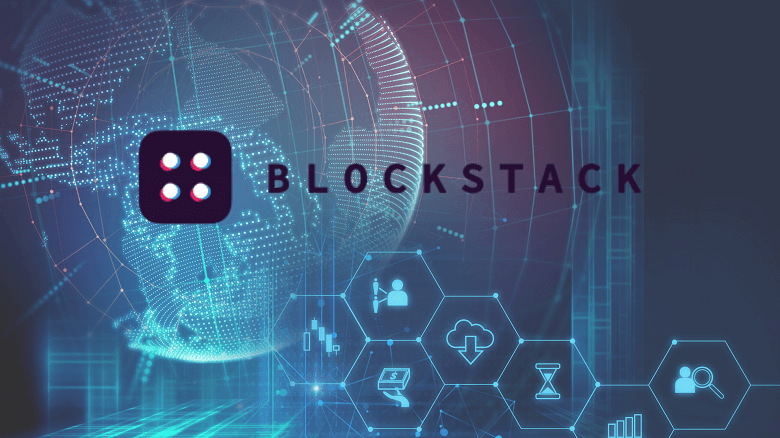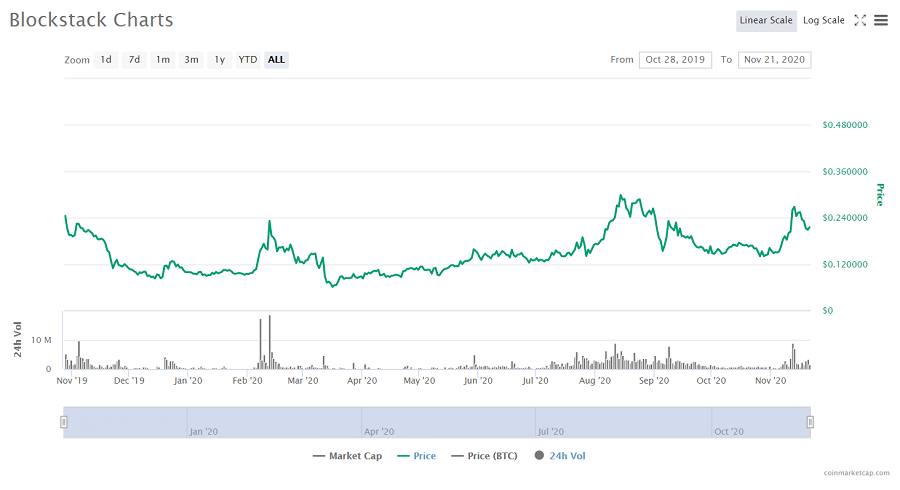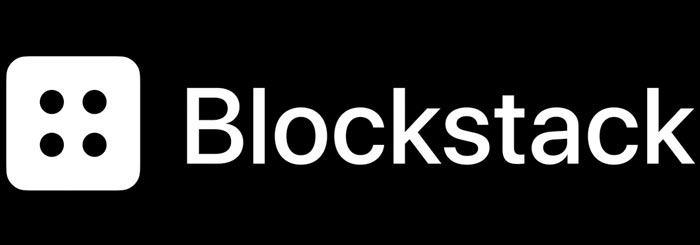
What is Blockstack?
Blockstack is a cryptocurrency project which seeks to build an open-source network on top of Bitcoin. At a topical level, Blockstack is intended to function as the application layer to the internet, one which is currently occupied by those aforementioned tech giants.
While Blockstack has its own blockchain, that blockchain is “anchored” to Bitcoin’s. In simple terms, everything that happens on the Blockstack blockchain can be verified on the Bitcoin blockchain, and Blockstack’s consensus (mining) mechanism is tied to Bitcoin. Blockstack makes it possible to build decentralized applications and smart contracts on Bitcoin by extension (via Blockstack).
Additionally, all users on the Blockstack network have ownership and control over their data when interacting with these dApps and smart contracts. This gives them an enhanced level of privacy compared to the current internet, wherein all data is owned and stored by tech giants such as Google, Facebook, and Microsoft.
How does Blockstack work?
There are quite a few components to the Blockstack ecosystem. For sake of simplicity, this article will focus on Blockstack’s consensus mechanism, the Blockstack blockchain, Blockstack’s user identity system, how Blockstack stores data, and Clarity, Blockstack’s programming language.
Blockstack Proof of Transfer Explained
Blockstack’ blockchain uses a novel consensus mechanism called Proof of Transfer (PoX for short). PoX involves two parties: miners and stackers. Miners on the Blockstack blockchain commit their Bitcoin for a chance of mining a block to earn STX tokens. Stackers “stack” (read: stake) their STX tokens to secure the network and earn the Bitcoin being committed by miners as reward.
While the exact rewards to be earned by stackers may change in the future, they must stack (read: stake) at least 94 000 STX tokens which are locked for a 10-day period. They will earn 9-10% of their stake in BTC per year assuming 50% of the liquid supply of STX is participating. Miners will earn 1000 STX per block for the first 4 years after the 2.0 main net launches.
This reward will be cut in half every 4 years in parallel with Bitcoin’s halving cycle for a 12-year period. STX mining rewards are paid for using inflation (more on this later). The exact amount of Bitcoin miners will have to commit to mine a block is also undefined, but their chances of being chosen depends on how much Bitcoin they commit.
Blockstack Blockchain
The Blockstack blockchain mirror’s Bitcoins in that a new Blockstack block is created every time a new Bitcoin block is created (roughly every 10 minutes).
The only data stored on the Blockstack blockchain is registered user identities and their transactional metadata. User identities include things such as decentralized applications and smart contracts.
What is Blockstack Auth?
Blockstack Auth is Blockstack’s user identification system. It makes it possible to use the same login credentials on every app built on Blockstack.
Blockstack Auth is also used to access and managed user data, which is stored off-chain in a storage system called Gaia.
Blockstack Gaia Storage System
The Gaia Storage System is where Blockstack stores all user data generated in its ecosystem with the exception of user identity and transactional metadata. Gaia consists of a handful of cloud service providers including AWS 3 and Azure. Data is entirely in the control of users, which use Blockstack Auth to manage their data permissions with the various applications they interact with.
It is important to note that the encryption of data generated on Blockstack is not encrypted by default. This is considered to be a “client-side” concern, meaning data management is fundamentally up to each user. That said, a user can opt to host their own personal data cloud in the Gaia Storage System if they have sufficient computing power and storage.
Clarity vs. Solidity
Clarity is the programming language used to build decentralized applications and smart contracts on Blockstack. It was built with the help of the team at Algorand, another smart contract cryptocurrency project. It will be released with the launch of Blockstack 2.0.
The biggest differences between Clarity and Solidity (Ethereum’s programming language) is that Clarity is not Turing complete and no code is compiled before being broadcast to the blockchain. In non-technical terms, Clarity trades off flexibility (what you can code) for more security (it is much harder to make errors). You can read more about Clarity here.
STX Cryptocurrency
STX is Blockstack’s native cryptocurrency token. It is burned to register digital assets including user identities and smart contracts to the Blockstack blockchain. However, inflation is used to pay miners on the network, meaning STX is inflationary and does not have a fixed supply. At genesis, STX had a total supply of 1.32 billion tokens.
As you can see in the image above, although STX is inflationary, annual inflation is expected to drop from just under 5% per year to less than 1% per year in the coming decades. This is due to both the tokens burned during network participation and the reduction in newly minted STX due to the halving schedule outlined earlier.
Blockstack ICO
Blockstack has held multiple public and private sales of its STX token. Their initial 2018 and 2019 ICOs sold slightly more 1/3rd of the initial supply of 1.32 million tokens at a price of 12 cents USD per STX. If you include early investor sales, this accounts for around 50% of the initial supply.
Of STX’s remaining supply initial supply, about 15% was allocated to the Blockstack team and founders, and the rest was divided between two treasuries which are managed by Blockstack. A small portion of STX tokens were also used to pay for Blockstack’s App Mining program.
Almost all allocated tokens have their own unique vesting (release) schedules which last anywhere from 2 to 7 years. Most of these vesting schedules began in October/November 2018 when Blockstack’s genesis block was mined and the token distributions began. You can read the updated emission schedule details here.
STX Price Analysis
STX has been on the cryptocurrency market for just over a year and has not seen very impressive performance. It reached a high of almost 30 cents in August this year but has been in a slight downtrend since then. This is only a 2.5x return from the ICO price of 12 cents, and that is assuming you sold the peak (which almost nobody is able to do).

Blockstack Roadmap
In October 2020, Blockstack rebranded to Stacks. That same month, Blockstack PBC, the New York based company which develops the Blockstack ecosystem, rebranded to Hiro Systems PBC. Both rebrands were intended to signal a paradigm shift for the project. This rebrand is progress at the time of writing.

The decision to rebrand to Stacks was intended to emphasize the notion that Blockstack has gone from being a cryptocurrency project to a much bigger ecosystem. In addition, the use of a universal name for all products (e.g. Stacks blockchain, Stacks Auth, Stacks token) is hoped to make the project less confusing for newcomers.
Hiro Systems PBC is named after the protagonist of a sci fi novel called Snow Crash. This novel was very influential to Blockstack founder Muneeb Ali and was even quoted in his PhD thesis. Hiro Systems PBC intends to focus more on developing the Blockstack ecosystem and helping foster development rather than working on the blockchain itself.
Final Word
Blockstack is by far one of the most interesting projects in cryptocurrency so far. Smart contracts and privacy on Bitcoin has long been a fantasy for many Bitcoin holders and especially for Bitcoin maximalists.
The strength of the team behind the project is a big bonus, and their commitment to cryptocurrency’s values of privacy, decentralization, and self-ownership is a cherry on top.
However, entangling Blockstack’s economic incentives with Bitcoin’s may spell disaster for the project. In a sense, the success of Blockstack depends on whether miners will commit their Bitcoin to the Blockstack blockchain. This “commitment” essentially involves trading Bitcoin for STX tokens, a trade which not many people will be willing to make during a bull market.



















